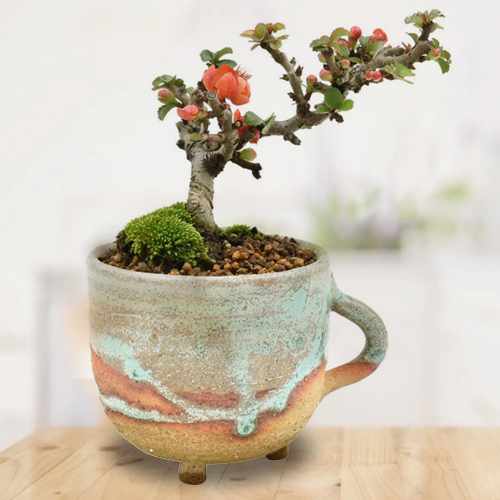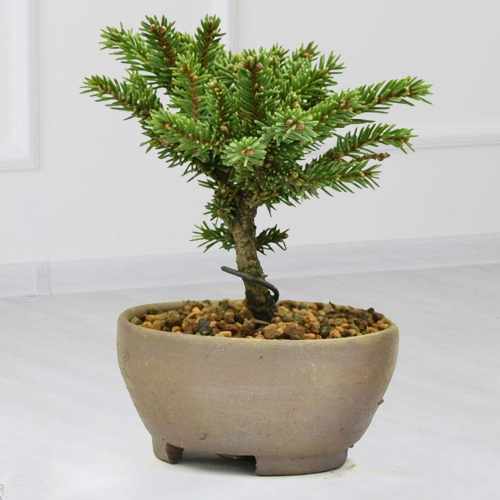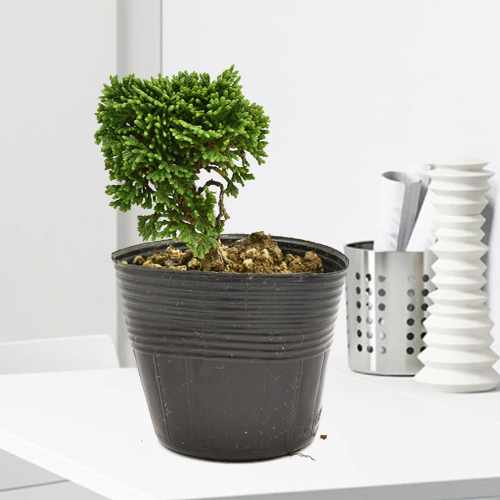Most Beautiful Japanese House Plants to Beautify Your Living
Filicium DecipiensThe fern tree of Japanese origin is swift in its growth up to 25feet (average height) being slender but graceful to add splendour to your home interiors. The beautiful plant resembles more akin to a tree resembling slightly other species of fern. During its growth period, it raises 12 inches every year. But, compared to the majority of indoor plants, this Japanese tree necessitates the least care. Attention is necessary only during the initial growth stages after its plantation.
Athyrium niponicum
The painted fern is a decorative Japanese plant and is perfect for home interior decoration. Some species have markedly colourful leaves that range from silver, variegated, foliage green and several more. Beautify your living space, adding this masterpiece indoor plant collection. This species of fern features a small bunch of exotic individual ferns growing about 2 to 3 feet in thickness. Though the plant cannot withstand direct sunlight, it is accustomed to bright sunny weather and partial sunlight. Let your plant bathe in the light of the morning sun.
Larix kaempferi
The Larch Bonsai is a stunning Japanese plant and, is an ideal selection for homeowners, who desire to add a charismatic but natural appeal to make their living room look outstanding! The plant is characterized by its speedy growth during spring & summer since these are the periods of its active growth. The plant remains dormant or tends to remain so during the winter months. You need to prune it regularly, and the best time is during the dormant phase. Also, wiring is necessary because of maintaining its shape. Whenever it’s necessary, clip the twigs at the base to get rid of the wiring before it slices profoundly into the plant’s bark.
Zelkova Serrata
The elm bonsai is a wonderful plant that can add a wondrous touch to your home decor. Perfectly appropriate for the broom art style, well explored with bonsai, the plant grasps the attention with its straight trunk and, its wide branch top bears the shape of an arc. Japanese elm can achieve fine growth under direct (not extreme) sunlight. So, don’t leave your plant under the scorching heat of the sun because it will cause your plant damage. You can leave it under the sun in the early hours of the morning. The plant not only necessitates moisture but also soil well-drained to achieve proper growth. Water twice a day during hot months but not during winter because Zelvoka is not accustomed to frost.
Dracena Surclosa
Japanese bamboo deserves special means being an exclusive green plant, an enduring one common in those areas of Japan that are comparatively warmer. The exotic plant model is characterised by a long stem-like stalk complemented by fairly broad green foliage. Japanese bamboo requires 3 years to attain maturity. Often, the shoots start to appear with the arrival of spring. Each species deserve unique mention in its diverse characteristics regarding the colour of the leaf. The speckles, as well as, the streaks on the surface of leaves come with variations in their colour. Remember, absolute care should be taken with pruning to nurture these plants.
Kokedama
The Japanese technique of instilling indoor plants with thick green clumps or moss to bring life to creativity displays an eye-catchy example of living art.
The best and selected plants for kokedama are:
- Philodendron
- Peace Lily
- Some types of ferns
This Japanese way of implanting plants indoors works most excellently in moist & soils that are well-aerated. Every day pour little water on these houseplants. You also need to adjust their setting for filtered sunlight. The lifespan of the majority of plants is 2 years on average. So, before that, the pots of plants need to be changed. You can experiment with various indoor plants to revamp and redecorate your living area.
Spathiphyllum
Also known as the Japanese Peace Lily, this exclusive plant with a striking exhibit displays a bright white blossom amidst big leaves. There are several varieties relating to the genus, each with distinctive features. The flower of this specific plant blossoms to about 25 cm in length including spathe with the leaves spanning from 12 to 65cm long and more or less 20cm in breadth. Contrasting to most indoor plants, Peace Lily favours daylight (of low intensity) bathing them indirectly with sporadic watering.
Acer palmatum
Also called the Japanese maple, Acer palmatum grasps the attention of your visitors with its discrete red leaves that can smarten the elegance of any living room. The plant height ranges from 15 to 25cm. The plant is highly adaptable to different kinds of soil but is perfect for the following soil types:
- Moist Soil
- Slightly acidic soils
- Well-drained soils
Acer palmatum can withstand diverse weather conditions.
Rhododendron
The name Azalea or Rhododendron deserves special mention being a pleasing choice, a trendy plant for indoors for almost every Japanese family. Azalea’s dwarf version can soar up to 3ft, producing flowers with beautiful colour shades during springtime, adding artistic touches to your living room. In this way, you can bring spring indoors! Maintenance of this plant is somewhat easy. So, you can choose to grow rhododendrons indoors.
Azalea plant thrives well in temperate semi-tropical areas with adequate rays of the sun all through the year. But, during spring and the period when the plant is most active, it favours low-intensity sunlight. Azalea doesn’t need to water much. However, keeping the soil wet and not soggy, is a good idea as there are chances of root damage that can cause complications. You also need to adjust your watering schedule to keep up a correspondence with the prevailing season. This is because azalea needs little or no water during wintry days.
The plant favour fertile soils that are not only acidic but also well-drained complemented by organic fertilizer (not always essential). However, checking the azalea’s status is essential, especially during the winter months, since it is very sensitive at this time of the year.
Last but not least, is the exotic Japanese Stonecrop that demands attention as a wonderful showpiece exhibiting its natural splendour. The plant needs moist & well-drained soil, maybe it is somewhat alkaline. Japanese Stonecrop favours direct rays of the sun for long periods.
Among these plants, some are small & some are tall Japanese houseplants. Then, there are small indoor plants Sugi and Ajisai-Dera. Also, there are tall indoor plants like Ezo Sprouce Mini Bonsai, Black Pine Mini Bonsai, as well as Sekka Hinoki.
 |  |  |